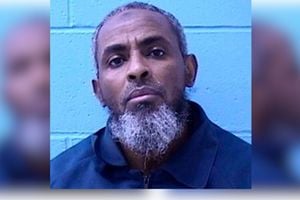Why do they check testes size during Health army recruitment?

The hullaballoo about testis size and whether testicles should be the same size was sparked by the vetting of Hon Adan Duale as Cabinet Secretary.
The last few days have been abuzz with people walking into the Sexology Clinic worried that they are abnormal because their testicles are not the same in size.
The hullaballoo about testis size and whether testicles should be the same size was sparked by the vetting of Hon Adan Duale as Cabinet Secretary.
It was claimed that one military recruit from Teso in Busia County was chased away a few days after successfully being recruited because his testicles were not the same size. Well, testicles are normally not the same in size.
The right one tends to be bigger. On average a testis is four centimetres long, three centimetres thick and two centimetres wide. This is an average which can have small variations.
The sizes also vary based on age and are smaller in children, get fully grown in adulthood and start to shrink as one ages. Biologically, testes serve two functions: Producing sperms and the hormone, testosterone, which is responsible for male physical features such as hair distribution, muscular growth, breaking of voice and general male behaviour of aggression and risk-taking.
It is also responsible for stimulating sexual desire and ensuring sexual function. Several diseases affect the testes. They can be infected and be painful and swollen as a result. Sometimes they can twist, also called testicular torsion. Torsion cuts blood supply to the testis and is acute and painful. It calls for urgent treatment otherwise the testis dies off.
The testes and the bag that houses them – the scrotum, can also have some other swellings including abnormal accumulation of water or blood which call for surgery. In some men, the testes can remain inside the pelvis, meaning that one or both cannot be felt in the scrotum. This normally requires surgery early in life to save the function of the testes because undescended testes easily get destroyed.
“I take it that the whole fiasco about testis sizes is the usual Kenyan hot air and wild goose chase to stop people from getting military jobs?” Mary, a patient who had come in with her husband Joel, interjected. I would not take the allegations against the military lightly. There is an urgent need for the military to provide a policy statement on sexuality and military recruitment.
It is actually a hot topic across the world. One example is the issue of intersex. In the last census Kenya included intersex in the count meaning that Kenya now recognises that gender is non-binary, which means we have males, females and people who are neither. Many military formations across the world state clearly whether one can serve in the forces if they are intersex.
Canada and Australia, for example, have expressly allowed this. In the US one can serve but whether to be in combat or not is determined after a thorough exam. Still, some people are transgender. These are people who are assigned a particular gender at birth based on their anatomical features as either male or female. Later in life they realise that their bodies do not match who they are in their brains.
As such they would normally go for surgery to change their genitals to match their brains. While many countries have no issues with recruiting transgender people into the army, others outlaw it. In the US, for example, this has depended on what the President of the day stands for. Obama allowed it, Trump outlawed it and Biden reinstated it.
Where it is outlawed, transgender people hide their identity as they serve in the army. The problem is that they suffer serious mental health problems including depression and some even commit suicide. Then there is the issue of homosexuals. Should they serve in the military? This is again very controversial. In many countries where homosexuality is outlawed, it is never a topic of discussion.
As such we do not know how many homosexuals are serving in KDF. Statistics however do not lie. When you have 100 men, about four are homosexuals and when you have 100 women, two are lesbians. These are global statistics and Kenyan figures may vary.
The truth, however, is that homosexuals are normal people with whom we interact each day. It is for this reason that the UK legalised homosexuals to serve in Her Majesty’s army in the year 2000. The US took a similar step in 2011. To avoid doubts about what the Kenyan military stands for on issues of sexuality, a policy statement is important. It serves to avoid scenarios that the boy from Teso faced. It is the right thing to do.





